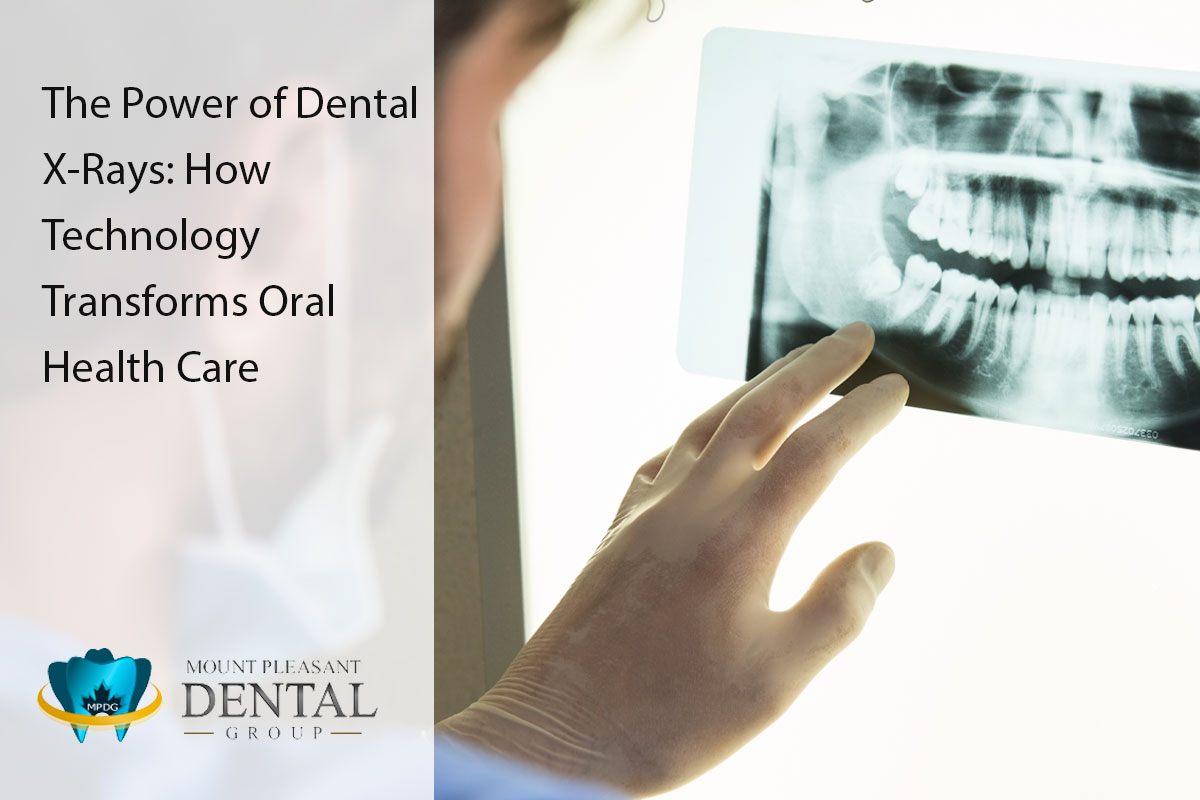As technology has swiftly progressed, the field of dental care has experienced a transformative evolution. Among the noteworthy advancements in oral health care, the utilization of dental X-rays stands out. These diagnostic instruments have fundamentally changed the approach to identifying and addressing a range of dental conditions. This article delves into the influential role of dental X-rays and their transformative impact on oral health care.
How Important Are Dental X-Rays
Types of Dental X-Rays
Dentists use different types of dental X-rays to check different parts of your mouth. Each type has a specific job and helps dentists see specific things.
- Bitewing X-rays: These are common and focus on the upper and lower back teeth. They show the crowns of the teeth and how tall the bone is. Dentists use them to find cavities between teeth, check gum disease, and see how well fillings and crowns fit.
- Periapical X-rays: These give a detailed view of one tooth from crown to root. They show the whole tooth structure, including roots and surrounding bone. Dentists use them to find issues like fractures, abscesses, and problems with how teeth grow.
- Panoramic X-rays: These show a wide view of the whole mouth, including jaws and teeth. They help dentists check impacted teeth, see how permanent teeth grow in children, and find issues like problems with the jaw joint.
- Cone Beam Computed Tomography (CBCT): This special X-ray gives a 3D view of teeth, jaws, and face structures. Dentists use it for complex tasks like placing dental implants, planning braces, and checking the relationship between teeth and jaw joints.
- Occlusal X-rays: These capture a wide view of the upper or lower jaw, showing tooth positions and growth. Dentists use them mainly to check how permanent teeth are growing in kids and to find problems with tooth alignment and development.
Safety Measures and Precautions for Dental X-Rays
Making sure patients stay safe is a big priority in dental offices, and this includes when using dental X-rays. While X-rays are generally safe, dentists take several steps to keep radiation exposure as low as possible and protect patients. These safety precautions involve:
- Lead Aprons and Thyroid Collars: Patients are given lead aprons and thyroid collars to wear before getting X-rays. These protective clothes help shield the body and sensitive organs from unnecessary radiation.
- Collimation and Beam Restriction: Dentists use devices to focus the X-ray beam on the specific area needed. This narrow focus helps reduce radiation exposure to surrounding tissues.
- Regular Equipment Calibration and Maintenance: Dental X-ray machines are regularly checked and maintained to make sure they work accurately and efficiently. Properly calibrated machines lessen the need for retakes, lowering radiation exposure for patients.
- Following the ALARA Principle: Dentists follow the “As Low As Reasonably Achievable” (ALARA) principle. This means using the lowest radiation dose needed to get the required images. Using modern machines and techniques helps get high-quality images with minimal radiation exposure.
- Considering Pregnancy: Special care is taken for pregnant patients to minimize radiation exposure to the developing baby. Whenever possible, X-rays are delayed until after pregnancy or limited to essential diagnostic images needed for immediate treatment.
Common Misconceptions About Dental X-Rays
Even though dental X-rays come with benefits and safety measures, there are some common misunderstandings that make patients worried. It’s crucial to clear up these misconceptions so that patients understand how important and safe dental X-rays are.
- Radiation Exposure: Some patients are concerned about radiation during dental X-rays. But, modern X-ray machines give off very little radiation, and dentists take steps to minimize it. The amount of radiation from dental X-rays is much lower than what you get from other medical imaging, like CT scans.
- Frequency of X-rays: Patients might worry about how often they need X-rays. The frequency depends on things like a patient’s oral health and risks. Dentists stick to guidelines and only suggest X-rays when necessary to keep patient exposure low.
- Alternative Imaging Techniques: People may question why X-rays are needed when there are other options like intraoral cameras or 3D scans. While these alternatives have their uses, X-rays give special diagnostic information that these methods can’t provide. X-rays are still crucial for complete dental care.
- Safety for Children: Parents might be concerned about X-ray safety for their kids. However, when dentists follow the right precautions, dental X-rays are generally safe for children. Dentists carefully weigh the benefits against any risks and use things like lead aprons and special devices to keep radiation exposure low.
- Effects on Fertility: Some think dental X-rays can affect fertility, but there’s no evidence for this. The radiation from dental X-rays is super low, and it’s unlikely to have any impact on reproductive health.
Conclusion




